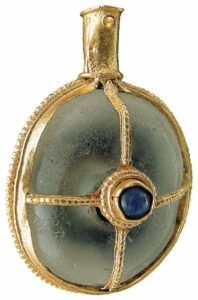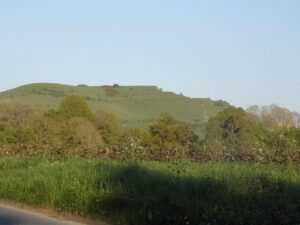Aestels from this period are very rare. The word aestel derived from the late Latin hastella, “a thick stick,” diminutive of hasta “spear, shaft”. It was used, like a finger, to follow early handwritten manuscript texts when reading, in the same way that the Yad is used in the Jewish synagogue for reading the Torah. The most famous example is the Alfred Jewel in the Ashmolean Museum, Oxford.
An aestel was useful as most texts in the Western world were handwritten and often difficult to read until the German Johannes Gutenberg invented the printing press, around 1436. However, Gutenberg was not the first to use a book-printing process. Woodblock printing dates back to the ninth century, Chinese and Korean bookmakers were printing with moveable metal type by the 14th century.
In the ninth century, King Alfred of Wessex (AD871-899) sent ornate aestels’ to all the dioceses in Wessex to accompany a handwritten translation, from Latin into Anglo Saxon (Old English), of Pope Gregory’s four volumes of instructional texts named Pastoral Care. These aestels became a symbol of Alfred the Great’s desire to encourage spiritual learning throughout his kingdom.




